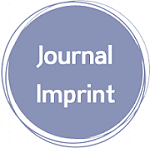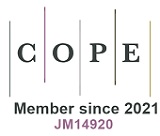Epidemiologic Evidence for Association between a High Dietary Acid Load and the Breast Cancer Risk
Downloads
Background and Purpose: Dietary acid load contributes to metabolic acidosis, leading to inflammation and cell transformation, potentially implicated in cancer development. Albeit an increased risk of recurrence among BC survivors was reported for a high acid load, the epidemiologic evidence associating diet-dependent acid load and cancer risk, particularly for breast cancer (BC), is still very limited. Therefore, we have explored in the present study its role in BC risk. Methods: A case-control study was performed on 1461 patients (572 BC cases and 889 age-frequency matched controls), through a multi-topic questionnaire, which included a food frequency questionnaire. Food-derived nutrients were calculated from available databases. The dietary acid load was calculated based on existing measures as potential renal acid load (PRAL) score and net endogenous acid production (NEAP) score. Odds Ratios (ORs) and their 95% confidence intervals were estimated by logistic regression, adjusting for potential confounders. Results: We found direct associations between dietary acid load and BC risk. Both scores were significantly associated (OR=2.46 and OR=1.78 for highest PRAL and NEAP, respectively). A positive BC family history involved higher risks (OR=6.14 and OR=3.38 for highest PRAL and NEAP, respectively). Linear trends were found in all overall and stratified analyses. Conclusions: Results suggest that a low acid load dietary style may reduce BC risk since both PRAL and NEAP scores were directly associated with meat intake and inversely associated with plant-based foods intake. The findings agree with studies focused on food groups and dietary patterns. Further studies are needed to confirm these findings.
Doi:10.28991/SciMedJ-2021-0302-8
Full Text:PDF
Downloads
Barrios, E., Garau, M., Alonso, R., & Musetti, C. (2014). IV Atlas of cancer incidence in uruguay. comision honoraria de lucha contra el cancer, montevideo, uruguay. (In Spanish)
Sung, H., Ferlay, J., Siegel, R. L., Laversanne, M., Soerjomataram, I., Jemal, A., & Bray, F. (2021). Global cancer statistics 2020: GLOBOCAN estimates of incidence and mortality worldwide for 36 cancers in 185 countries. CA: A Cancer Journal for Clinicians. doi:10.3322/caac.21660
International Agency for Research on Cancer, 2018, Global Cancer Observatory–Cancer Today. Available online: https:// gco.iarc.fr/today/online-analysis-table. (accessed 11 June 2020).
Mahmoud, R. I., & Tayyem, R. F. (2020). Dietary and Lifestyle Factors and Breast Cancer Risk. Current Nutrition & Food Science, 16(3), 251–259. doi:10.2174/1573401315666181129121258.
Farvid, M. S., Chen, W. Y., Rosner, B. A., Tamimi, R. M., Willett, W. C., & Eliassen, A. H. (2018). Fruit and vegetable consumption and breast cancer incidence: Repeated measures over 30 years of follow‐up. International Journal of Cancer, 144(7), 1496–1510. doi:10.1002/ijc.31653
Dianatinasab, M., Rezaian, M., HaghighatNezad, E., Bagheri-Hosseinabadi, Z., Amanat, S., Rezaeian, S., … Ghiasvand, R. (2020). Dietary Patterns and Risk of Invasive Ductal and Lobular Breast Carcinomas: A Systematic Review and Meta-analysis. Clinical Breast Cancer, 20(4), e516–e528. doi:10.1016/j.clbc.2020.03.007
Lo, J. J., Park, Y. M., Sinha, R., & Sandler, D. P. (2019). Association between meat consumption and risk of breast cancer: Findings from the Sister Study. International Journal of Cancer, 146(8), 2156–2165. doi:10.1002/ijc.32547
Clinton, S. K., Giovannucci, E. L., & Hursting, S. D. (2019). The World Cancer Research Fund/American Institute for Cancer Research Third Expert Report on Diet, Nutrition, Physical Activity, and Cancer: Impact and Future Directions. The Journal of Nutrition, 150(4), 663–671. doi:10.1093/jn/nxz268.
United Nations Development Program. Available online: http://hdr.undp.org/en/content/2019-human-development-index-ranking (accessed on 1 September 2020).
Food and Agriculture Organization, 2019, Available online: http://www.fao.org/faostat/en/#data/CL (Accessed 28 July 2019).
Ronco, A., De Stefani, E., Mendilaharsu, M., & Deneo‐Pellegrini, H. (1996). Meat, fat and risk of breast cancer: a case‐control study from Uruguay. International journal of cancer, 65(3), 328-331. doi: 10.1002/(SICI)1097-0215(19960126)65:3<328::AID-IJC9>3.0.CO;2-1.
De Stefani, E., Ronco, A., Mendilaharsu, M., Guidobono, M., & Deneo-Pellegrini, H. (1997). Meat intake, heterocyclic amines, and risk of breast cancer: a case-control study in Uruguay. Cancer Epidemiology and Prevention Biomarkers, 6(8), 573-581.
Pizzorno, J., Frassetto, L. A., & Katzinger, J. (2009). Diet-induced acidosis: is it real and clinically relevant? British Journal of Nutrition, 103(8), 1185–1194. doi:10.1017/s0007114509993047.
Carnauba, R., Baptistella, A., Paschoal, V., & Hübscher, G. (2017). Diet-Induced Low-Grade Metabolic Acidosis and Clinical Outcomes: A Review. Nutrients, 9(6), 538. doi:10.3390/nu9060538.
Remer, T., & Manz, F. (1994). Estimation of the renal net acid excretion by adults consuming diets containing variable amounts of protein. The American Journal of Clinical Nutrition, 59(6), 1356–1361. doi:10.1093/ajcn/59.6.1356.
Frassetto, L. A., Todd, K. M., Morris, R. C., & Sebastian, A. (1998). Estimation of net endogenous noncarbonic acid production in humans from diet potassium and protein contents. The American Journal of Clinical Nutrition, 68(3), 576–583. doi:10.1093/ajcn/68.3.576.
Kiefte-de Jong, J. C., Li, Y., Chen, M., Curhan, G. C., Mattei, J., Malik, V. S., … Hu, F. B. (2016). Diet-dependent acid load and type 2 diabetes: pooled results from three prospective cohort studies. Diabetologia, 60(2), 270–279. doi:10.1007/s00125-016-4153-7.
Abbasalizad Farhangi, M., Nikniaz, L., & Nikniaz, Z. (2019). Higher dietary acid load potentially increases serum triglyceride and obesity prevalence in adults: An updated systematic review and meta-analysis. PLOS ONE, 14(5), e0216547. doi:10.1371/journal.pone.0216547.
Robey, I. F. (2012). Examining the relationship between diet-induced acidosis and cancer. Nutrition & Metabolism, 9(1), 72. doi:10.1186/1743-7075-9-72.
Fürstenberger, G., & Senn, H.-J. (2002). Insulin-like growth factors and cancer. The Lancet Oncology, 3(5), 298–302. doi:10.1016/s1470-2045(02)00731-3.
Park, Y. M., Steck, S. E., Fung, T. T., Merchant, A. T., Elizabeth Hodgson, M., Keller, J. A., & Sandler, D. P. (2018). Higher diet‐dependent acid load is associated with risk of breast cancer: Findings from the sister study. International Journal of Cancer, 144(8), 1834–1843. doi:10.1002/ijc.31889.
Fenton, T. R., & Huang, T. (2016). Systematic review of the association between dietary acid load, alkaline water and cancer. BMJ Open, 6(6), e010438. doi:10.1136/bmjopen-2015-010438.
Wu, T., Seaver, P., Lemus, H., Hollenbach, K., Wang, E., & Pierce, J. P. (2019). Associations between Dietary Acid Load and Biomarkers of Inflammation and Hyperglycemia in Breast Cancer Survivors. Nutrients, 11(8), 1913. doi:10.3390/nu11081913.
Wu, T., Hsu, F.-C., Wang, S., Luong, D., & Pierce, J. P. (2020). Hemoglobin A1c Levels Modify Associations between Dietary Acid Load and Breast Cancer Recurrence. Nutrients, 12(2), 578. doi:10.3390/nu12020578.
Safabakhsh, M., Imani, H., Yaseri, M., Omranipour, R., & Shab‐Bidar, S. (2020). Higher dietary acid load is not associated with risk of breast cancer in Iranian women. CANCER REPORTS, 3(2). doi:10.1002/cnr2.1212.
Ronco, A. L., De Stefani, E., Mendoza, B., Deneo-Pellegrini, H., Vazquez, A., & Abbona, E. (2016). Mate Intake and Risk of Breast Cancer in Uruguay: a Case-Control Study. Asian Pacific Journal of Cancer Prevention, 17(3), 1453–1461. doi:10.7314/apjcp.2016.17.3.1453.
Ronco, A. L., Vazquez, A., Ronco, A., Stefani, E. D., Mendoza, B., Vazquez, A., ... & Rosa, A. (2016). Mate and tea intake, dietary antioxidants and risk of breast cancer: a case-control study. Asian Pacific Journal of Cancer Prevention, 17(6), 2923-2933.
Ronco, A. L., Calderon, J. M., & Espinosa, E. (2017). Dietary iron,‘mate’intake and breast cancer risk: a case-control study in Uruguay. J Breast Cancer Res Adv, 1(1), 1-7.
Ronco, A. L., Espinosa, E., & Calderón, J. M. (2018). A case-control study on heme/non-heme iron and breast cancer risk. Annals of Clinical Nutrition, 3, 1011.
Sickles, E. A., d’Orsi, C. J., Bassett, L. W., Appleton, C. M., Berg, W. A., & Burnside, E. S. (2013). Acr bi-rads® mammography. ACR BI-RADS® atlas, breast imaging reporting and data system, 5, 39-48.
Ronco, A. L., De Stefani, E., Boffetta, P., Deneo‐Pellegrini, H., Acosta, G., & Mendilaharsu, M. (2006). Food patterns and risk of breast cancer: a factor analysis study in Uruguay. International journal of cancer, 119(7), 1672-1678. doi: 10.1002/ijc.22021.
Mazzei ME, Puchulu MR, Rochaix MA. (1995) Table of food chemical composition. Cenexa y Feiden Publishers, 2nd Ed., Buenos Aires (in Spanish).
Breslow, N. E., Day, N. E., & Schlesselman, J. J. (1982). Statistical methods in cancer research. Volume 1—The analysis of case-control studies. Journal of Occupational and Environmental Medicine, 24(4), 255-257.
Ronco AL, Martínez-López W, Calderón JM, Mendoza BA. (2020) Dietary acid load and colorectal cancer risk: a case-control study. World Cancer Research Journal; 7: e1750. doi: 10.32113/wcrj_202011_1750.
Jafari Nasab, S., Rafiee, P., Bahrami, A., Rezaeimanesh, N., Rashidkhani, B., Sohrab, G., … Sadeghi, A. (2020). Diet-dependent acid load and the risk of colorectal cancer and adenoma: a case–control study. Public Health Nutrition, 1–8. doi:10.1017/s1368980020003420.
Shi, L.-W., Wu, Y.-L., Hu, J.-J., Yang, P.-F., Sun, W.-P., Gao, J., … Zhong, G.-C. (2021). Dietary Acid Load and the Risk of Pancreatic Cancer: A Prospective Cohort Study. Cancer Epidemiology Biomarkers & Prevention. doi:10.1158/1055-9965.epi-20-1293.
Gillies, R. J., Pilot, C., Marunaka, Y., & Fais, S. (2019). Targeting acidity in cancer and diabetes. Biochimica et Biophysica Acta (BBA) - Reviews on Cancer, 1871(2), 273–280. doi:10.1016/j.bbcan.2019.01.003.
Aoi, W., Zou, X., Xiao, J. B., & Marunaka, Y. (2019). Body Fluid pH Balance in Metabolic Health and Possible Benefits of Dietary Alkaline Foods. eFood, 1(1), 12. doi:10.2991/efood.k.190924.001.
Marunaka, Y. (2018). The Proposal of Molecular Mechanisms of Weak Organic Acids Intake-Induced Improvement of Insulin Resistance in Diabetes Mellitus via Elevation of Interstitial Fluid pH. International Journal of Molecular Sciences, 19(10), 3244. doi:10.3390/ijms19103244.
Osuna-Padilla, I. A., Leal-Escobar, G., Garza-García, C. A., & Rodríguez-Castellanos, F. E. (2019). Dietary acid load: Mechanisms and evidence of its health repercussions. Nefrología (English Edition), 39(4), 343–354. doi:10.1016/j.nefroe.2019.08.001.
Khansari, N., Shakiba, Y., & Mahmoudi, M. (2009). Chronic Inflammation and Oxidative Stress as a Major Cause of Age- Related Diseases and Cancer. Recent Patents on Inflammation & Allergy Drug Discovery, 3(1), 73–80. doi:10.2174/187221309787158371.
Sia, P., Plumb, T. J., & Fillaus, J. A. (2013). Type B Lactic Acidosis Associated With Multiple Myeloma. American Journal of Kidney Diseases, 62(3), 633–637. doi:10.1053/j.ajkd.2013.03.036.
Lee, S.-H., & Griffiths, J. R. (2020). How and Why Are Cancers Acidic? Carbonic Anhydrase IX and the Homeostatic Control of Tumour Extracellular pH. Cancers, 12(6), 1616. doi:10.3390/cancers12061616.
Brand, A., Singer, K., Koehl, G. E., Kolitzus, M., Schoenhammer, G., Thiel, A., … Kreutz, M. (2016). LDHA-Associated Lactic Acid Production Blunts Tumor Immunosurveillance by T and NK Cells. Cell Metabolism, 24(5), 657–671. doi:10.1016/j.cmet.2016.08.011.
Yu, H., Zhong, X., Gao, P., Shi, J., Wu, Z., Guo, Z., … Song, Y. (2019). The Potential Effect of Metformin on Cancer: An Umbrella Review. Frontiers in Endocrinology, 10. doi:10.3389/fendo.2019.00617.
Dulskas, A., Patasius, A., Linkeviciute-Ulinskiene, D., Zabuliene, L., Urbonas, V., & Smailyte, G. (2019). Metformin increases cancer specific survival in colorectal cancer patients—National cohort study. Cancer Epidemiology, 62, 101587. doi:10.1016/j.canep.2019.101587.
European Food Safety Authority (EFSA) Panel on Dietetic Products, Nutrition and Allergies (NDA). (2015). Scientific Opinion on Dietary Reference Values for phosphorus. EFSA Journal, 13(7). doi:10.2903/j.efsa.2015.4185.
Ritz, E., Hahn, K., Ketteler, M., Kuhlmann, M. K., & Mann, J. (2012). Phosphate Additives in Food. Deutsches Aerzteblatt Online. doi:10.3238/arztebl.2012.0049.
Hannah, J., Roe, M., Warthon-Medina, M., Pinchen, H., Barrett, M., & Perry, S. (2018). Phosphorus in food: limitations of food composition data. Journal of Kidney Care, 3(6), 362–367. doi:10.12968/jokc.2018.3.6.362.
Brown, R. B., & Razzaque, M. S. (2018). Phosphate toxicity and tumorigenesis. Biochimica et Biophysica Acta (BBA) - Reviews on Cancer, 1869(2), 303–309. doi:10.1016/j.bbcan.2018.04.007.
Carrigan, A., Klinger, A., Choquette, S. S., Luzuriaga-McPherson, A., Bell, E. K., Darnell, B., & Gutiérrez, O. M. (2014). Contribution of Food Additives to Sodium and Phosphorus Content of Diets Rich in Processed Foods. Journal of Renal Nutrition, 24(1), 13–19.e1. doi:10.1053/j.jrn.2013.09.003.
Frassetto, L. A., Morris, R. C., & Sebastian, A. (2007). Dietary sodium chloride intake independently predicts the degree of hyperchloremic metabolic acidosis in healthy humans consuming a net acid-producing diet. American Journal of Physiology-Renal Physiology, 293(2), F521–F525. doi:10.1152/ajprenal.00048.2007.
Pavithra, V. (2015). Serum Levels of Metal Ions in Female Patients with Breast Cancer. Journal of Clinical and Diagnostic Research. doi:10.7860/jcdr/2015/11627.5476.
Lin, H.-H., & Farkas, M. E. (2018). Altered Circadian Rhythms and Breast Cancer: From the Human to the Molecular Level. Frontiers in Endocrinology, 9. doi:10.3389/fendo.2018.00219.
Walton, Z. E., Patel, C. H., Brooks, R. C., Yu, Y., Ibrahim-Hashim, A., Riddle, M., … Dang, C. V. (2018). Acid Suspends the Circadian Clock in Hypoxia through Inhibition of mTOR. Cell, 174(1), 72–87.e32. doi:10.1016/j.cell.2018.05.009.
Qian, Q. (2018). Dietary Influence on Body Fluid Acid-Base and Volume Balance: The Deleterious “Norm” Furthers and Cloaks Subclinical Pathophysiology. Nutrients, 10(6), 778. doi:10.3390/nu10060778.
Ronco, A. L., De Stéfani, E., & Stoll, M. (2010). Hormonal and metabolic modulation through nutrition: Towards a primary prevention of breast cancer. The Breast, 19(5), 322–332. doi:10.1016/j.breast.2010.05.005.
- This work (including HTML and PDF Files) is licensed under a Creative Commons Attribution 4.0 International License.












